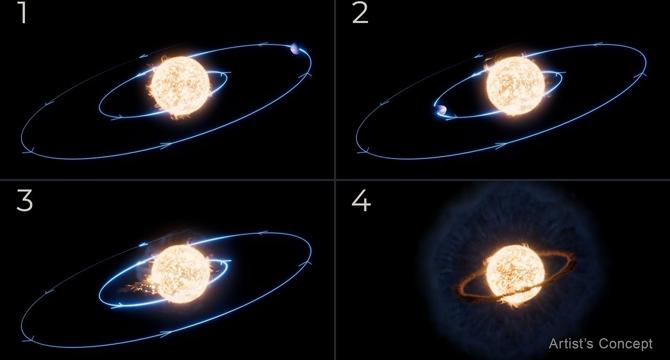Nasa
1M
274

Image Credit: Nasa
NASA Webb’s Autopsy of Planet Swallowed by Star Yields Surprise
- NASA's James Webb Space Telescope observed a star swallowing a planet, revealing a hot accretion disk and a cloud of cooler dust enveloping the scene.
- Contrary to previous beliefs, the star did not swell to engulf the planet, but the planet’s orbit gradually shrank over time until it was engulfed.
- The observations challenged the initial hypothesis, providing valuable insights into planetary system fates, including our own.
- Instruments MIRI and NIRSpec on Webb conducted the post-mortem, leading to the conclusion that the star did not expand as expected.
- The planet initially orbited close to the star, gradually moving closer over millions of years, resulting in its ultimate demise.
- As the planet neared the star, it began to graze its atmosphere, eventually falling in and forming a disk of cold dust around the star.
- Webb's observations also revealed a hot circumstellar disk of molecular gas closer to the star, with carbon monoxide detected.
- The findings, under the Guaranteed Time Observation program, open up new questions and opportunities for further research with upcoming telescopes.
- This unique event allows for a deeper understanding of such phenomena and offers insights into how the universe operates.
- The study, published in The Astrophysical Journal, showcases the significant findings from Webb's investigation of the planetary engulfment.
Read Full Article
16 Likes
For uninterrupted reading, download the app